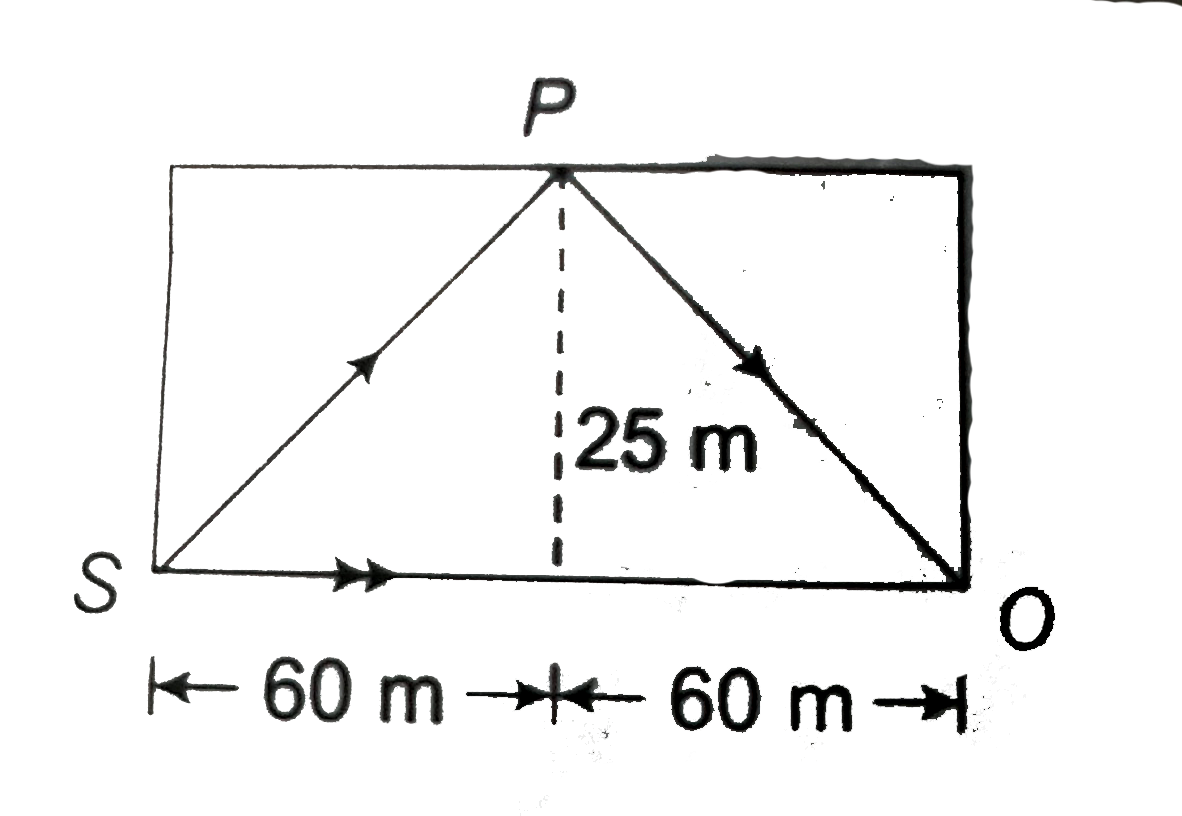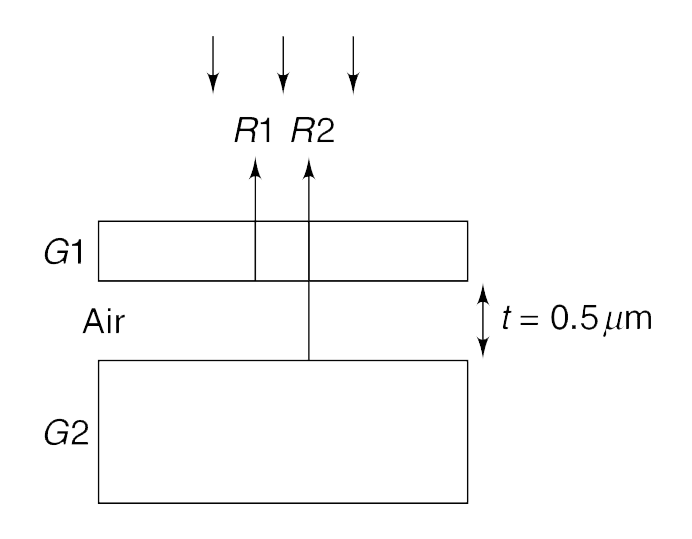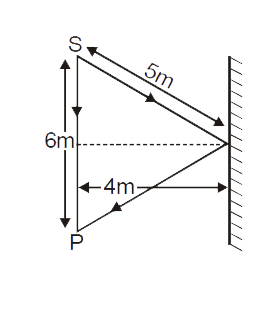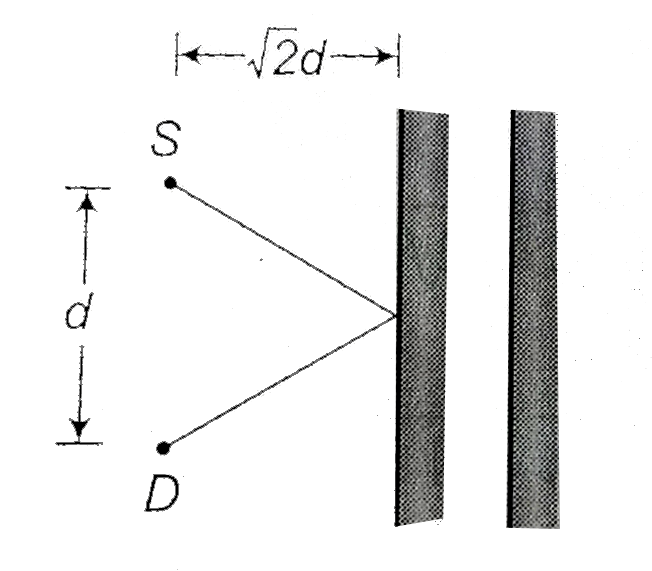In a hall, a person receives direct sound waves from a source 120m away. He also receives waves from the same source which reach him after being reflected from the 25m high ceiling at a point halfway between them. The two waves interfere constructively for wavelengths (in metres)
10,102m103
20,203m205
30,20,10,…
35,25,15,…
The correct Answer is:A

Path difference Δx=SPO−SO=25P−50
=2√(60)2+(25)2−120=10m
For constructive interference
Δx=nλ⇒10=nλ
λ=10nm
λ=10,102,103,104...m
Topper's Solved these Questions
Similar Questions
A thin glass slab G1 is held over a large glass slab G2, creating an air gap of uniform thickness t=0.5μm between them. Electromagnetic wave having wavelengths

ranging from 0.4μmto1.15μm is incident normally on the slab G1. When interference between waves reflected from boundaries of air gap (the two reflected waves are shown in fig as R1 and R2) was studied, it was found that only two wavelengths interfered constructively. One of these two wavelengths is λ1=0.04μm.
Find the other wavelength (λ2) that interferes constructively.
View SolutionA person standing at a distance of 6 m from a source of sound receives sound wave in two ways, one directly from the source and other after reflection from a rigid boundary as shown in figure. The maximum wavelength for which, the person will receive maximum sound intensity, is

View Solution
Knowledge Check
In a large room, a person receives direct sound waves from a source 120 meters away from him. He also receives waves from the same source which reach him, being reflected from the 25 meter high ceiling at a point halfway between them. The two waves interfere constuctively for wavelength of
A20,20/3etcB10,5,2.5etcC10,20,30etcD15,25,35etcIn a large room , a person receives waves from the same source which reach , being reflected from the 25m high ceiling at a point halfway between them . The two waves interfere constructively for a wavelength of
A20,203,205 , etc.B10,5,2.5, etc.C10,20,30, etc.D15,25,35, etc.In a large room , a person receives direct sound waves from a source 120m away . He also receives waves from the same source which reach him after being reflected from the 5m high ceiling at a point halfway between them . For which wavelengths will these two sound waves interfere constructively ?
A0.21 mB0.44 mC0.36 mD0.45 m
A source S and a detector D are placed at a distance d apart. A big cardboard is placed at a distance √2d from the source and the detector as shown in figure. The source emits a wave of wavelength =d2 which is received by the detector after reflection from the cardboard. It is found to be in phase with the direct wave received from the source. By what minimum distance should the cardboard be shifted away so that the reflected wave becomes out of phase with the direct wave ?

View SolutionA source S and a detector D are placed at a distance d apart. A big cardboard is placed at a distance √2d from the source and the detector as shown in figure. The source emits a wave of wavelength =d/2 which is received by the detector after reflection from the cardboard. It is found to be in phase with the direct wave received from the source. By what minimum distance should the cardboard be shifted away so that the reflected wave becomes out of phase with the direct wave?

View SolutionIn a hall, a person receives direct sound waves from a source 120m away. He also receives waves from the same source which reach him after being reflected from the 25m high ceiling at a point halfway between them. The two waves interfere constructively for wavelengths (in metres)
View SolutionA detector at x=0 receives waves from three sources each of amplitude A and frequencies f+2,f and f−2.
The time at which intensity is maximum, is
View SolutionThe path length difference between two waves coming from coherent sources for destructive interference should be
View Solution
